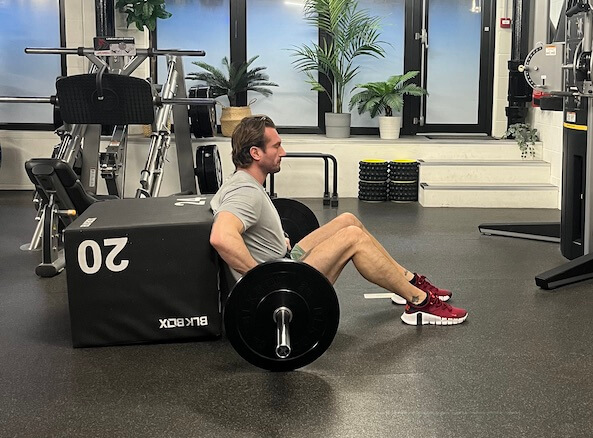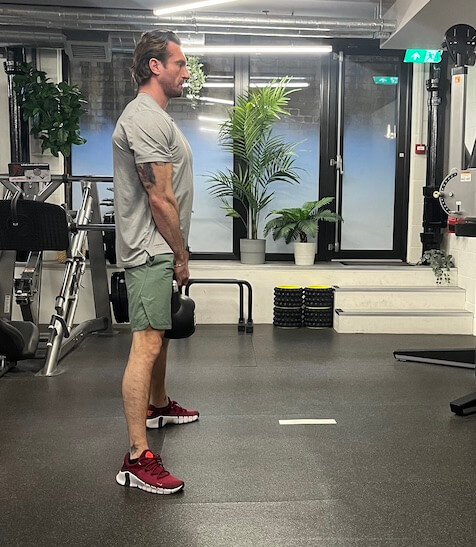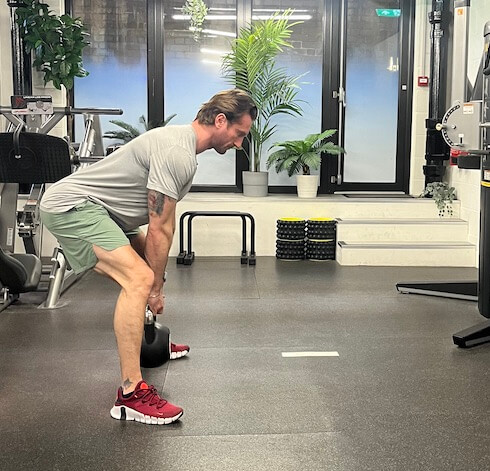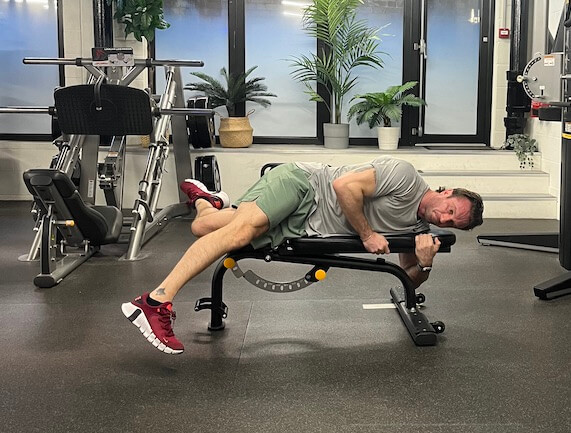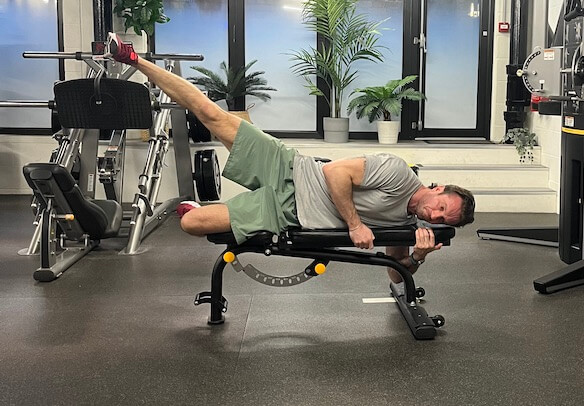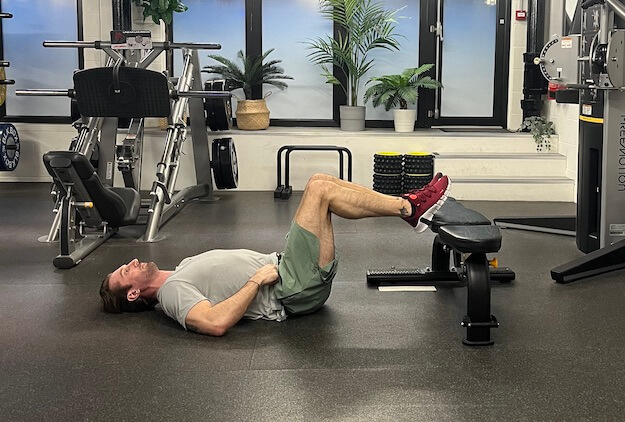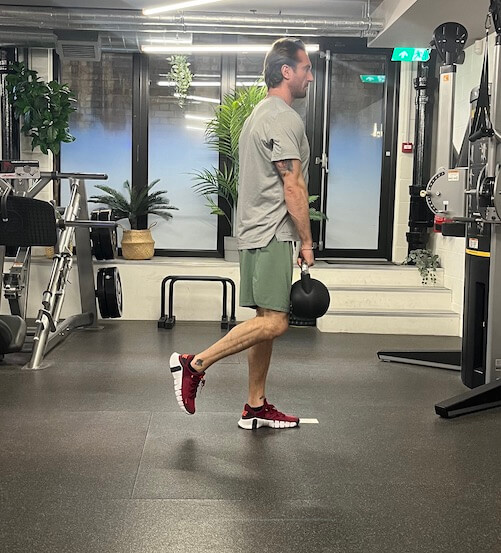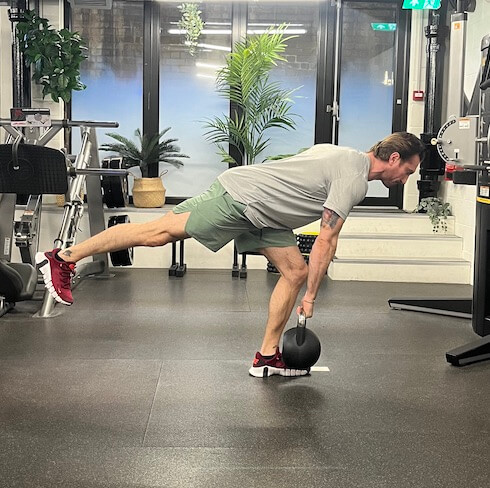Products You May Like
World-renowned personal trainer Luke Worthington recommends adding these best glutes exercises to your weekly routine to improve lower-body strength and general athleticism…
Glute training has shown a leap in popularity over the last five to ten years, driven mostly by the increase in competitive physique contests, and of course the growth of the Instagram generation.
However, glute training isn’t only for women! This is a vitally important muscle group to train and strengthen for everyone – regardless of whether the goals are aesthetic, performance, or simply to be able to move and feel a little better.
Need some more lower-body inspiration? Try these resistance band exercises for legs
How the glutes work
The glutes attach to the posterior aspect of the pelvis, and wrap around the hip joint, attaching to the upper and outer aspect of the femur. This 3D anatomical arrangement means that they have the ability to produce force in all three planes of motion:
- Sagittal: forward and back (hip extension, moving the femur behind the body)
- Frontal: side to side (hip abduction, moving the leg to the side away from the midline of the body)
- Transverse: rotation (rotating the leg externally away from the midline of the body)
In order to train the glutes correctly, you need to train all three of these movement patterns.
Limber up with these highly effective stretching exercises
Why you should train glutes
The glutes (along with their synergistic partners the hamstrings) play a role in extending the hip. What we mean by this is that they’re responsible for moving the femur (thigh bone) behind the midline of the hips. This action forms one half of the gait cycle (walking) which makes it a fundamental building block of human movement, and the foundation of any athletic activity.
However, as well as playing a dynamic role in extending the hip, the glutes also play a static role as an ‘anti-gravity muscle’. If we think of the hip joint as a major pivot, and our centre of gravity (the navel) sitting above it, then we require an equilibrium of forces acting around the pivot to keep it balanced.
The job of the glutes in this balancing act is to pull down on the back of the pelvis to counteract forces pulling down on the front. Considering most objects you lift or carry will be in front of you, and anyone who carries excess bodyweight is also most likely to be in front of them, then the role of the glutes in balancing this all out is a very important one. Your glutes quite literally hold you up.
When programming for clients, I will include specific glute training for everyone, no matter their goals. It really is that important.
Take on this dumbbell-only upper-body workout
These are the best glutes exercises to incorporate into your routine…
1. Hip Thrust
Recommended reps: 6-8
- Imagine you’re lifting your belt buckle to your chin, to ensure there is no extension of the lumbar spine.
- Glue the chin to the chest to ensure there is no extension of the cervical spine (neck).
For more on this go-to move for stronger glutes, look no further than our comprehensive guide to barbell hip thrust benefits
2. Sumo Romanian Deadlift
Recommended reps: 8-10
- The weight should travel in a straight line up and down, and the hips should push back behind you.
- Pointing the toes outwards at around a 45-degree angle allows the glutes to work through more of their fibre length.
- This is one of the best glutes exercises, and you can easily swap the kettlebell (pictured) for a dumbbell.
3. Side-Lying Abduction
Recommended reps: 12-15
- Hug the bench tightly with the bottom arm. This helps to stabilise the torso and keep the movement coming from the hips.
- Leading with the heel, and not the toe, helps to emphasise the glute over the hamstrings and TFL muscle.
4. 45-Degree Back Extension
Recommended reps: 10-12
- Rounding out the upper back into a ‘slouch’ type posture as you perform this exercise lengthens the back extensor muscles.
- If you’re lengthening them, you cannot be contracting them to assist with the movement, which helps to protect the lower back and keep the work in the glutes.
Track your progress with the best fitness watches for 2023
5. Frogger
Recommended reps: 15-20
- Initiate the separation of the knees as soon as the buttocks lift from the floor.
- This allows you to train external rotation at the same time as extension, accessing more glute fibres with every repetition.
6. Single-Leg Romanian Deadlift
Recommended reps: 8-10
- Loading the opposite arm and leg allows you to rotate over the stance leg, training the working glute through transverse plane as well as sagittal.
- You can encourage this even more by lowering the weight in front of the grounded foot rather than beside it.
- Clenching the fist of the non-working arm helps to improve balance by equalising tension.
